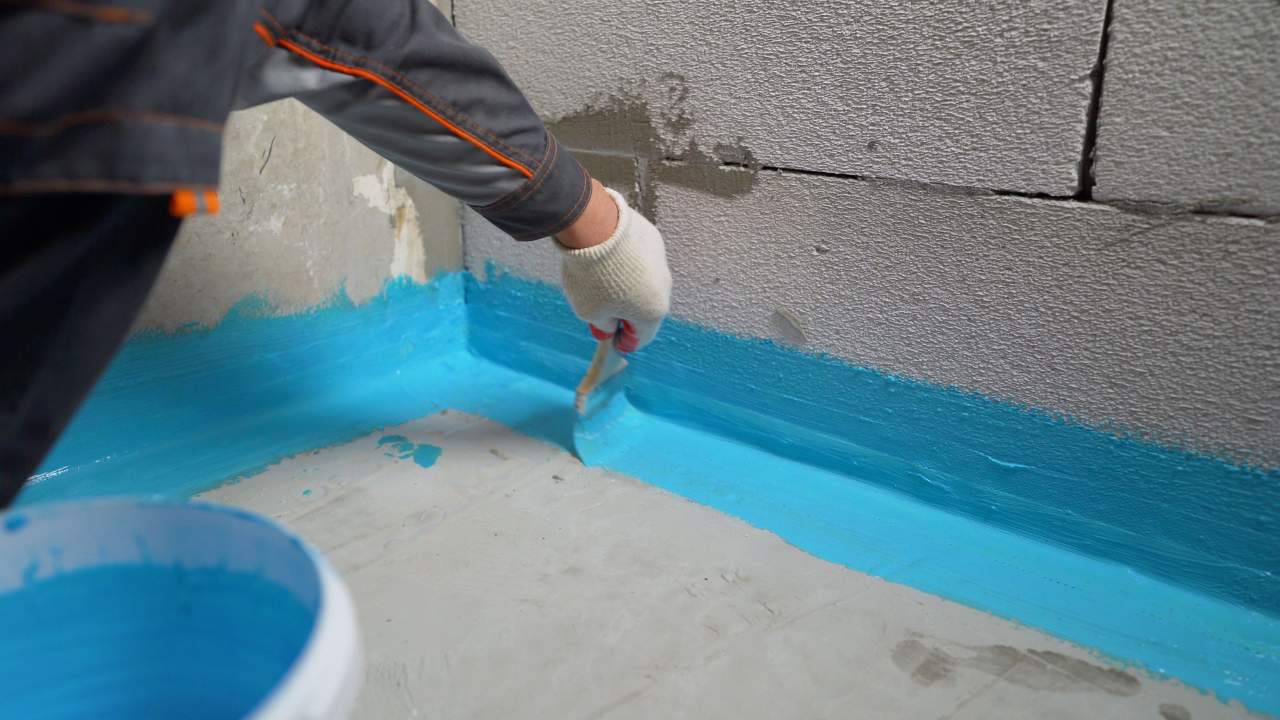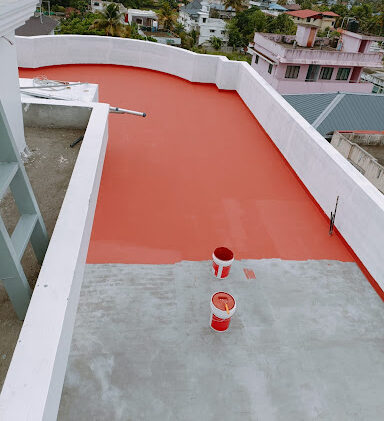Our Services
One-Stop Solution for Waterproofing Problems
Bathroom Waterproofing

A well-waterproofed bathroom is essential to prevent water damage, mold growth, and structural issues. In India, with its diverse climatic conditions, waterproofing your bathroom is a wise investment.
Why is Bathroom Waterproofing Important?
-
- Structural Integrity: Prevents water seepage, which can weaken the building’s structure over time.
- Hygiene and Health: Reduces the risk of mold, mildew, and other health hazards caused by dampness.
- Aesthetics: Maintains the beauty of your bathroom, preventing water stains and damage.
- Property Value: A well-maintained bathroom can significantly increase your property’s value.
Common Waterproofing Techniques for Bathrooms (KERAKOLL – AQUASTOPFLEX)
Cementitious Waterproofing:
1.Preparation of Substrates:
The substrate must be perfectly cured and dry, solid (i.e., free of weak or easily removable parts), and free from oil, grease, and paint. The surface should be cleaned and prepared using a wire brush or breaker machine, and cracks should be grooved using a cutting machine. Cracks must be filled with a mixture of a two-component epoxy gel system or Dr. Fixit crack powder or Fosroc.
2.Aquastop Flex Preparation:
Aquastop Flex is prepared by mixing component A with component B in a preset ratio of 3:1 as provided in the packaging. The two components should be mixed with a suitable low-rev electrical mixer for approximately 2 minutes until a homogeneous consistency is achieved. Pour the latex into a clean container and gradually add the powder while mixing. Allow the mixture to rest for about 2 minutes to let the co-polymer disperse completely, then mix again for approximately 20 seconds before use.
3.Application:
Aquastop Flex should be applied to the prepared substrate using a rigid fiber brush. For effective waterproofing, apply the first coat and allow it to harden before applying a second coat in a criss-cross direction over the first coat.
4.Protective Plastering with Admixture:
Clean the floor of dust and loose material. Mix a 1:4 ratio of plaster cement and sand with the integral waterproofing compound Kerakoll P6. Perform coving between the floor and wall, and apply the mortar over the second coat of waterproofing.
5.Conduct Water Pond Test (Client’s Scope):
Store the water for 48 hours at a depth of 4 inches. If any leakage is detected, Buildcare will rectify it.
Key Areas to Waterproof in Your Bathroom
-
- Floor: The bathroom floor is the most vulnerable area, especially around the shower and bathtub.
- Walls: Waterproofing walls, particularly those near the shower and bathtub, is crucial.
- Joints and Corners: Proper sealing of joints and corners is essential to prevent water penetration.
- Drainage System: Ensure the drainage system is efficient to avoid water accumulation.
- Budget: The cost of different waterproofing techniques varies, so it’s essential to consider your budget.
Professional Installation for Long-Lasting Protection
BUILDCARE waterproofing specialists are experienced professionals who can assist you with the following:
-
- Accurate Assessment: Conduct a thorough inspection to identify potential issues.
- Quality Materials: Use high-quality waterproofing materials.
- Expert Installation: Ensure proper application of the chosen technique.
- Warranty: Provide a five-year warranty for our work, giving our clients peace of mind.
By investing in quality bathroom waterproofing, you can protect your home from water damage, maintain its value, and create a healthier, more hygienic living space.
